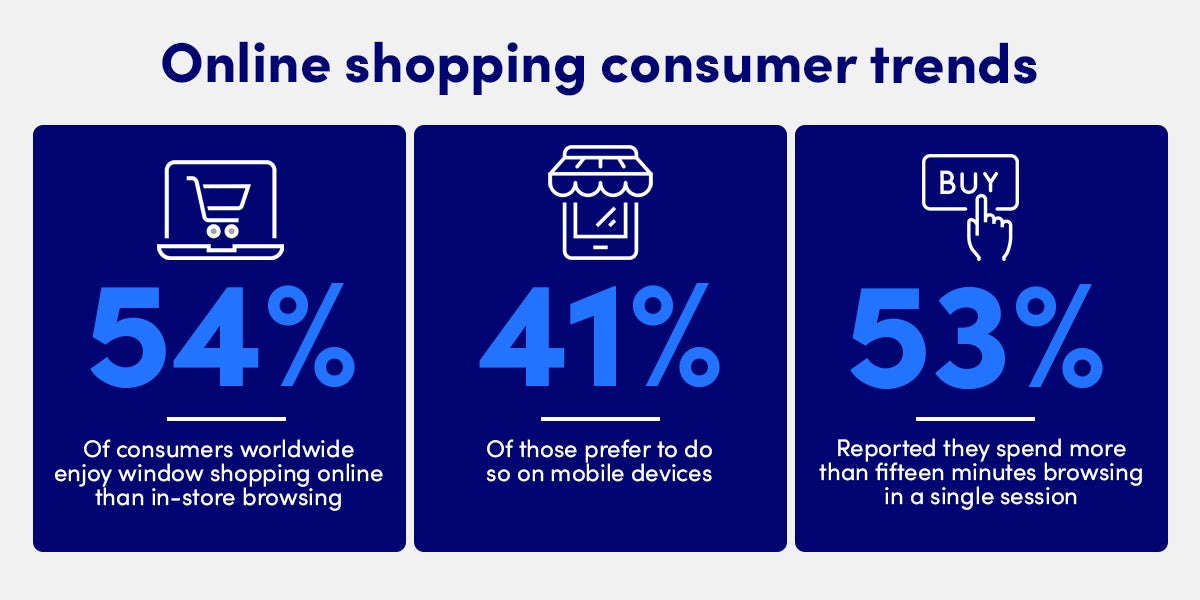Summary
Online and mobile payments were considered to be a new frontier, but these forms of commerce are clearly mainstream, and on their way to dominance.
The content on this page is accurate as of the posting date; however, some of our partner offers may have expired. Please review our list of best credit cards, or use our CardMatch™ tool to find cards matched to your needs.
Once upon a time, people mostly shopped at brick-and-mortar stores or ordered merchandise by mail or over the telephone. But those days are long gone, as most of us choose to shop online instead for many of our purchases, which has only become more popular in the wake of the COVID-19 pandemic.
Consumers’ payment choices are also changing rapidly, thanks to a boom in new financial technology, mobile apps and other payment services. As mobile and contactless payments quickly grow in popularity, retailers, banks and other financial services companies are rapidly debuting new ways to pay for goods and services.
Here’s a closer look at how the retail and payment landscape has evolved over the years.
Online and in-store shoppers have more payment options than ever
Consumers shopping at a brick-and-mortar store can choose to pay with cash, physical debit or credit cards, prepaid cards, gift cards or other traditional payment methods. Or, depending on the merchant, they may be allowed to pay for purchases with an NFC-enabled smartphone, a mobile payment app or even a wearable device, such as a payment-enabled smartwatch.
When shopping online, consumers have even more options to choose from, including:
- Online payment services and apps, such as PayPal
- Buy-now-and-pay-later services, such as Afterpay
- Point-of-sale installment loans, such as Affirm
- Virtual payment cards such as Privacy
- Social media payment services, such as Facebook Pay
Despite the surge in options, most shoppers continue to use cash, credit or debit cards to pay for purchases.
- According to the Federal Reserve Bank of Atlanta’s 2020 Diary of Consumer Payment Choice[1], U.S. consumers made an average of 35 payments each month, more than half with payment cards including debit, credit and prepaid. Debit cards are the most frequently used payment choice, averaging 9.8 transactions per month, followed by credit at 9.4 transactions and cash at 6.5.
- But the number of transactions is only one way to look at payment usage. When viewed in terms of the average amount per transaction, money orders were issued in the greatest amount, at an average of $615, followed by checks at $392. Debit, credit and cash transactions averaged far smaller amounts at $53, $77 and $42 respectively.
- When viewed in terms of overall value, checks made up 20%, with BANP (bank account and routing number payments) making up 18%. Credit payments accounted for 16%, with debit at 12% and cash at just 6%.
Online sales continue to grow
It seems clear that the COVID-19 crisis affected consumer’s preferences for online versus in-store shopping, as a 2020 report by PYMTS.com documents.[2]
It found that almost 36% of U.S. shoppers are currently buying retail goods online, exceeding the 29% who did so during the height of the pandemic in April 2020, when most in-person stores were closed.
Another report by Digital Commerce 360[3] shows that e-commerce sales rose sharply to 21.3% in 2020 from 15.8% in 2019. This after comparatively small but steady increases from 5.6% in 2009.
And even when we visit stores to make purchases, there’s still a large online component to consumer’s shopping decisions.
- According to a study by MFour Mobile Research[4], 96% of consumers report researching big purchases online, with nearly half saying that they spend one to two weeks doing so and the rest spending more time.
- But at the same time, the report showed that in-store shoppers were twice as likely to spend more than online shoppers.
Consumers are paying more bills online
The Atlanta Fed’s report showed that online or mobile purchases of goods and services increased from 17% of all purchases in 2019 to 24% in 2020 (as a share of both in-person and not-in-person purchases).
The report also found that U.S. consumers made 57% of their payments with debit, credit and prepaid payment cards, and only used cash, checks and money orders for 25% of their payments.
And although cards were used more frequently than electronic payments, when looking at the total value of payments, those made electronically exceeded that of payments made by cards – $1,476 compared to $1,269.
Consumers are warming to mobile payments
Consumers are also doing more shopping with their mobile phones, multiple reports have found.
- According to a report on digital wallet use by RetailCustomerExperience.com[5], the number of consumers using mobile wallets to make payments increased from around 900 million to 1.48 billion worldwide during the pandemic.
- And in 2020, 25.7% of all point-of-sale payments were made using mobile wallets, as reported in WorldPay’s Global Payments Report 2021[6]. The report predicts that in three years, the figure will jump to 33.4%.
- The report also shows mobile payments comprised 44.5% of all e-commerce transactions last year, which was double that of credit cards and three times more than debit card payments.
- Credit cards and debit cards were expected to hold the same market share in the next two years, around 22% of point-of-sale payments each. Yet, cash transactions are projected to experience a significant decline, from 20.5% in 2020 to 12.7% in 2024.
People like to research, browse and shop with their mobile phones
A recent Bazaarvoice survey of over 9,000 consumers worldwide found that a majority (54%) enjoy “window shopping” online more than in-store browsing[7]. And for 41% of them, their mobile phone was their favorite device to do so. This was followed by laptops (28%) and desktop (21%) computers. In fact, 53% of those surveyed reported spending more than 15 minutes browsing in a single session.

Point-of-sale mobile phone purchases are slowly, but steadily, increasing
There’s no doubt that Americans are addicted to their mobile phones and are using them far more than their desktop computers. According to a Perficient report on mobile and desktop usage in 2020[8], mobile devices drove 61% of visits to U.S. websites in 2020, up from 57% in 2019. Desktop computers accounted for 35.7% of all visits in 2020, and tablets drew the remaining 3.3% of visitors.
And this preference is reflected in our shopping behavior. According to a December 2020 report from Business Insider[9], mobile commerce, sometimes referred to as m-commerce, has been growing to become a larger portion of total U.S. retail sales. For example, In 2019 m-commerce comprised over a quarter of total e-commerce, which is more than twice what it was in 2015.
Business Insider also predicted that m-commerce would reach $284 billion, or 45% of the total U.S. e-commerce market, by the end of 2020.
Bottom line
Online and mobile payments were once considered to be a new frontier, but these forms of commerce are clearly mainstream and on their way to dominance. Whether window shopping, paying bills or making everyday purchases, the future of payments is online and mobile, and there’s no going back.
Sources
- Federal Reserve Bank of Atlanta, The 2020 Diary of Consumer Payment Choice
- PYMNTS.com, The Great Reopening: Shifting Preferences, June 2020
- Digital Commerce 360, “A decade in review: E-commerce sales vs. retail sales, 2007-2020,” Jan. 2021
- MFour Mobile Research, “In-store vs. online shopping: Where and what consumers buy,” Dec. 2020
- Retail Customer Experience, “Mobile wallet use growing worldwide, reveals data report,” June 2021
- WorldPay, The Global Payments Report 2021
- BazaarVoice, “The joy of online discovery; 54% of global shoppers enjoy virtual window shopping more than in-store browsing,” April 2021
- Perficient, Mobile vs. Desktop Usage in 2020, March 2021
- Business Insider, Rise of M-Commerce: Mobile Ecommerce Shopping Trends in 2021, Dec. 2020
Editorial Disclaimer
The editorial content on this page is based solely on the objective assessment of our writers and is not driven by advertising dollars. It has not been provided or commissioned by the credit card issuers. However, we may receive compensation when you click on links to products from our partners.





